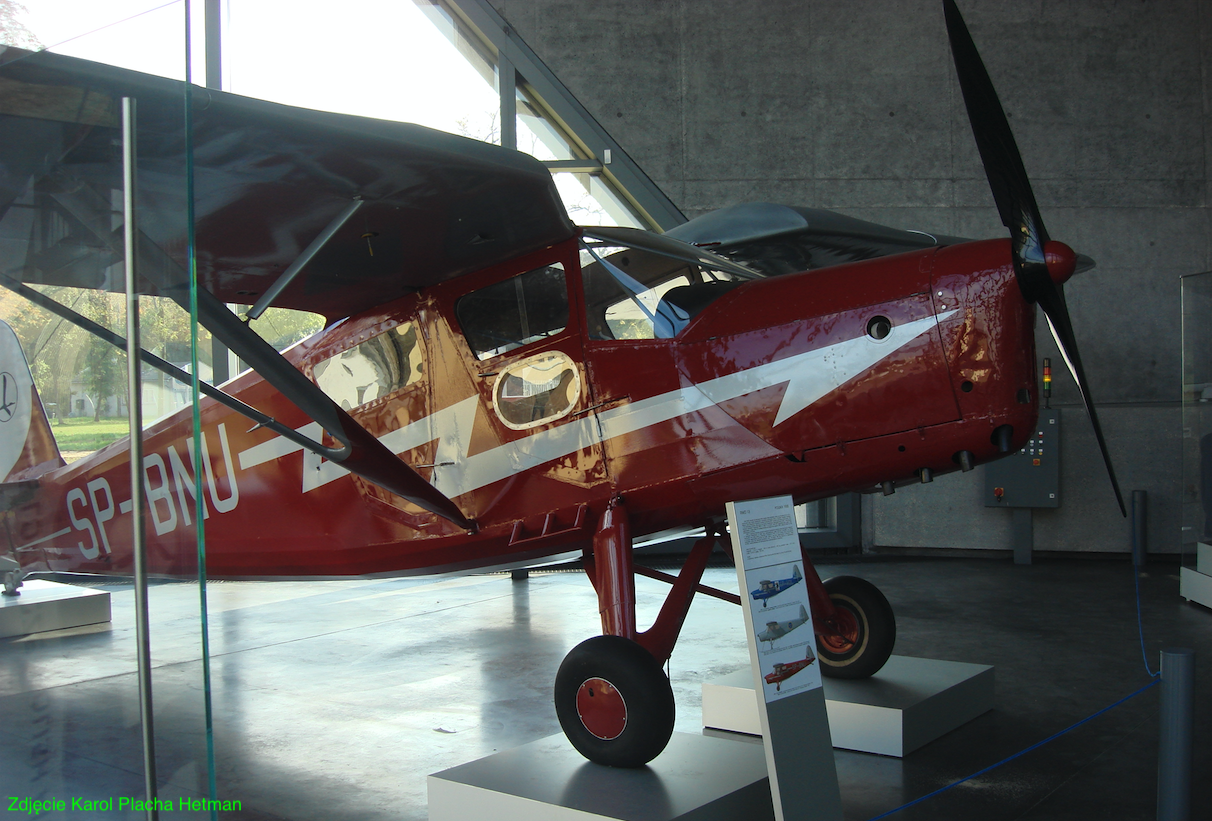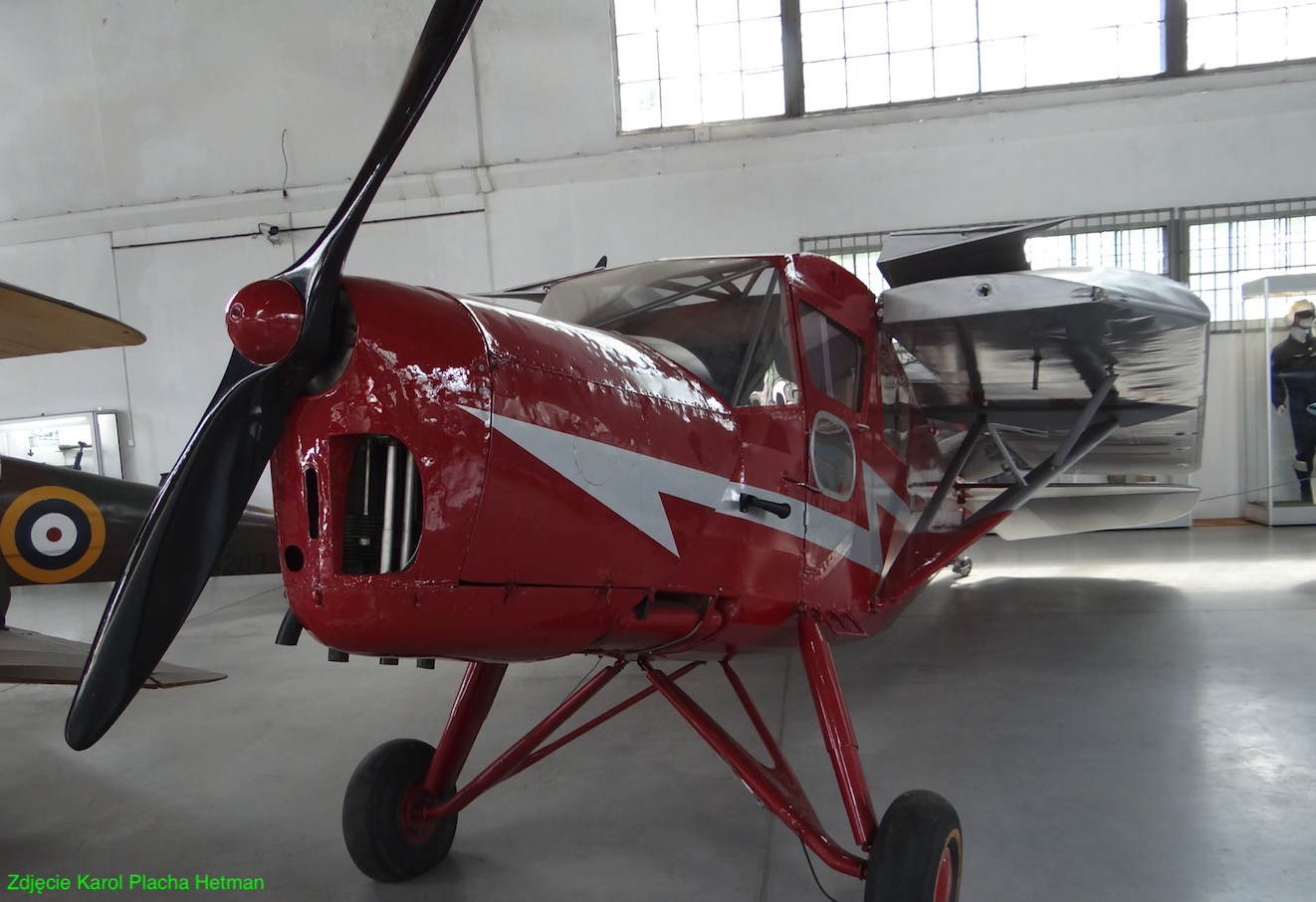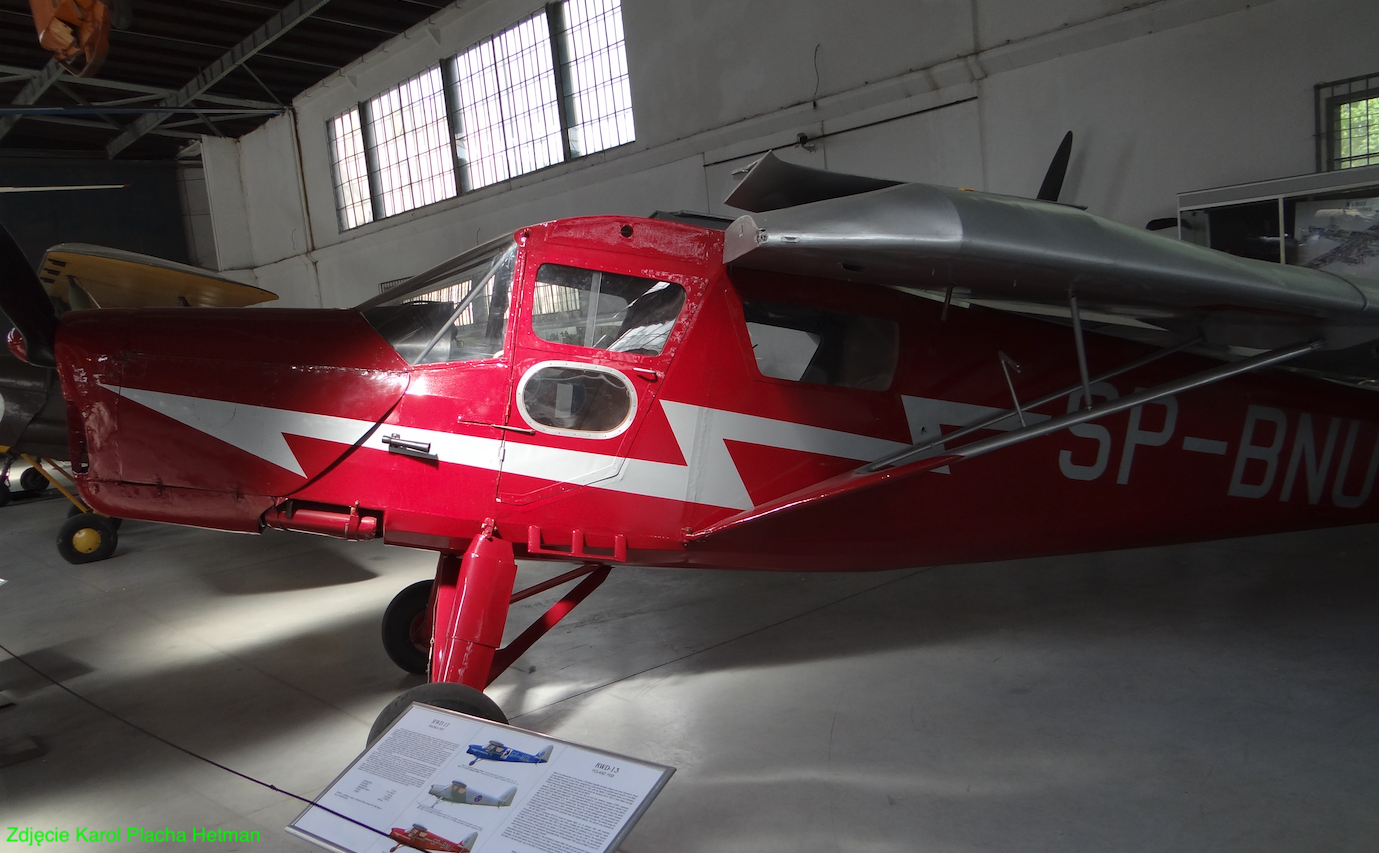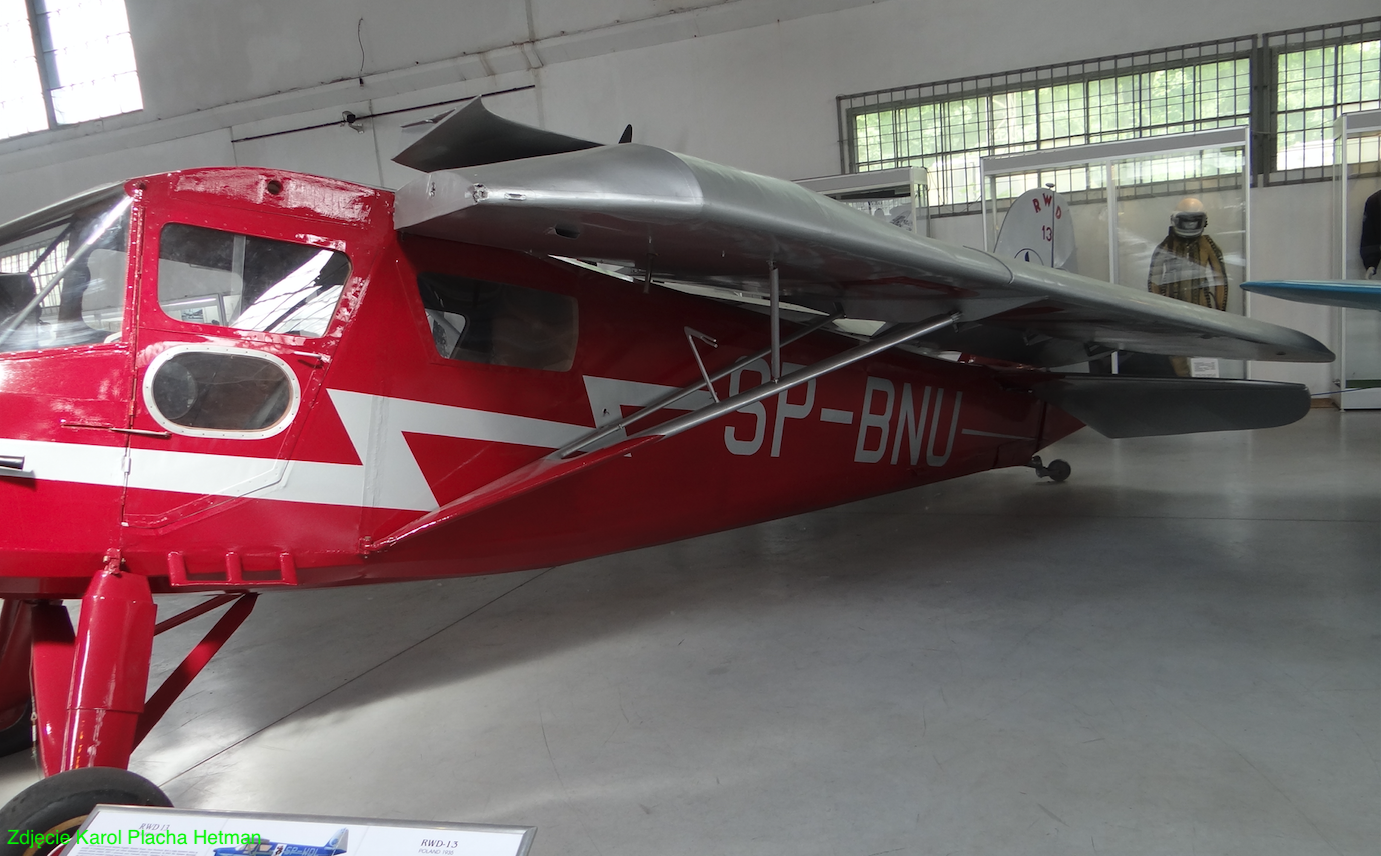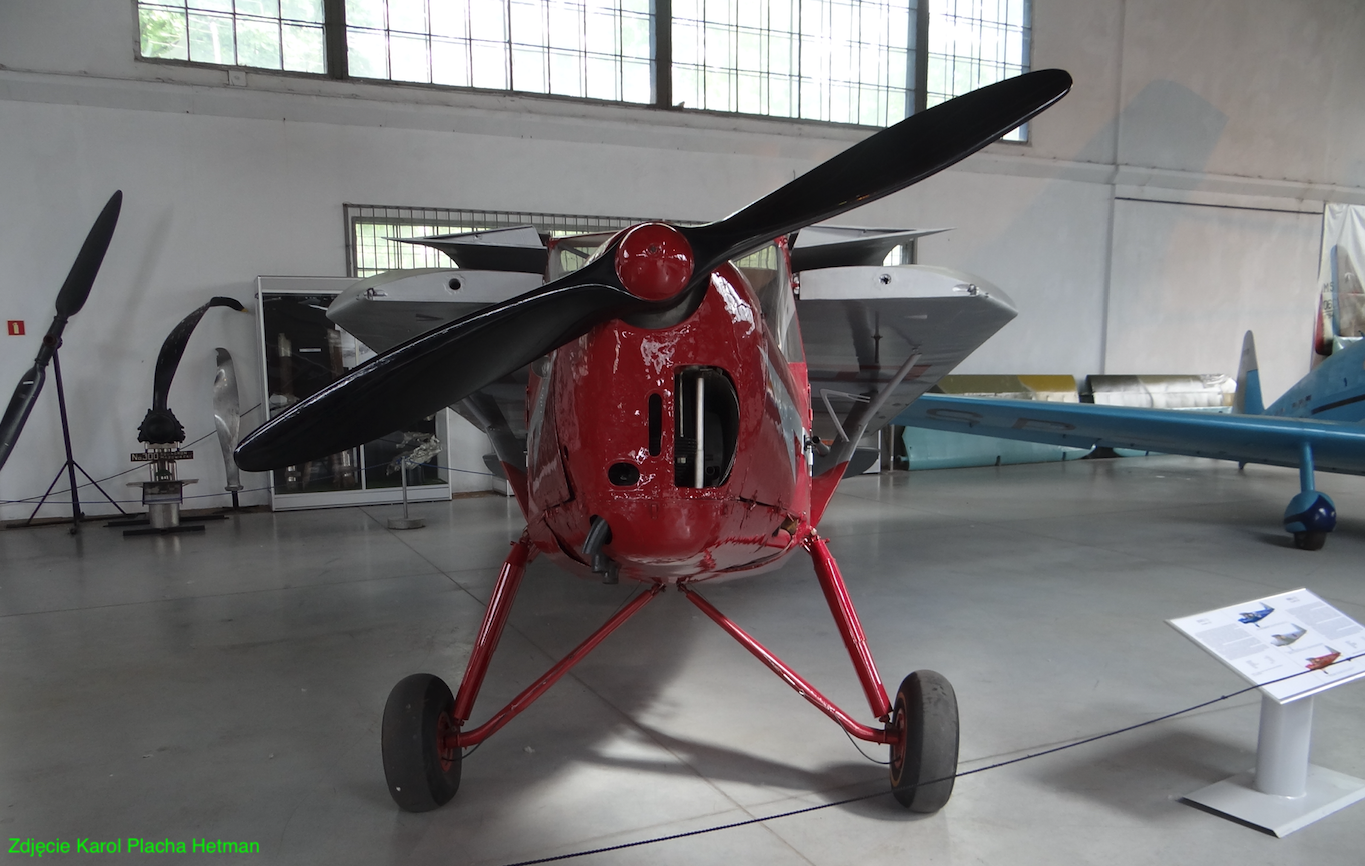Kraków 2018-11-12
RWD-DWL RWD-13 factory.
00135b Chapter 15 January 1935. Poland.
RWD-13 sports and tourist plane.
History of RWD-13.
Experimental Aviation Workshops, abbreviated as DWL, was a Polish aviation company that designed and produced aircraft under the designation RWD. The abbreviation RWD stands for the names of the constructors: Stanisław Rogalski, Stanisław Wigura and Jerzy Drzewiecki. As a time frame we can assume: December 1925 – September 1, 1939.
On the RWD-5 bis plane, the pilot, Capt. Stanisław Skarżyński crossed the Atlantic Ocean alone. The RWD-6 aircraft piloted by Franciszek Żwirka and Stanisław Wigura won the 1932 Challenge International des Avions de Tourisme international competition. In 1934, the pilot Capt. Jerzy Bajan and senior sergeant mechanic Gustaw Pokrzywka on RWD-9 repeated this success.
In the fall of 1934, the Main Board of the Air and Anti-Gas Defense League (LOPP) placed an order for a popular sports and tourist aircraft. The plane was intended for three people. The aircraft was to be a development of the RWD-6 and RWD-9 aircraft. Initially, the new aircraft was to be marked RWD-6 bis.
The constructors of the RWD-13 aircraft were engineers: Stanisław Rogalski, Leszek Dulęba and Jerzy Drzewiecki. The engineers resigned from complicated and expensive construction solutions. They tried to keep the take-off and landing distance short, while maintaining a good cruising speed. The cabin is equipped with heating and ventilation.
Work on the plane was progressing very quickly. The prototype of the RWD-13 aircraft, registration SP-AOA, was flown by pilot Kazimierz Chorzewski on January 15, 1935.
Several minor changes were made to the design of the RWD-13 airframe and in May 1935 serial production was started, which was interrupted by the outbreak of World War II. About 100 RWD-13 aircraft were built. About 20 aircraft were exported, among others to Spain, Brazil, Palestine, Iran, Yemen and the USA. License production of RWD-13 aircraft was also undertaken by the Yugoslav Rogożarski plant.
In 1937, the sanitary version, marked RWD-13 S, was developed by engineer Bronisław Żurakowski. During the International Sanitary Aviation Competition in Luxembourg in July 1938, the RWD-13 S aircraft was recognized as the best machine. RWD-13 S was mass-produced. The aircraft was given one seat for a stretcher patient, one seat for the pilot on the left side, and one seat for a doctor behind the pilot. There is a special door on the port side for loading stretchers. The first flight of the RWD-13 S was made on April 30, 1937. 15 aircraft were built in the RWD-13 S and RWD-13 TS (tourist and sanitary) versions. About 45 RWD-13 aircraft were interned in Romania and Sweden after the outbreak of World War II.
RWD-13 turned out to be extremely durable and low failure rate. In 1947, Romania returned four preserved RWD-13 aircraft to Poland. They were admitted to the status of the Polish Aeroclub. In 1963, one of these aircraft was transferred to the museum in Czyżyny in Krakow. There is still one copy of the RWD-13 in the world at the Museu Asas de um Sonho in Itu near São Paulo in Brazil.
In the period 1935-1939, about 100 RWD-13 aircraft were built at the DWL in Okęcie, including 15 aircraft in the RWD-13 S / TS version. About 20 aircraft were built under license in Yugoslavia.
RWD-13 design.
The wings are made of wood. They are covered with plywood and canvas. Automatic slots and slotted ailerons were left on the wings, but the flaps were abandoned. For easier hangaring, the wings were folded along the fuselage. The area of the wings is 16 square meters.
The hull is made of steel pipes. In addition, it received wooden frames and stringers, made of plywood, to give it the right shape. The entire hull was covered with plywood and canvas. The front part is covered with aluminum. The cabin is designed for three people. Two people sit in the front and one in the back. Visibility from the cabin is very good. The armchairs have a metal structure, made of tubes, covered with light upholstery. There are double controls in the cabin. The dashboard is equipped with basic pilotage and navigation instruments. The walls and ceiling in the cabin were covered with upholstery.
4-cylinder in-line engine, inverted PZInż. (lic. Walter) Major A with 130 hp (95 kW). Two-blade, fixed, wooden propeller. Two airfoil fuel tanks with a total capacity of 140 liters of fuel.
T-T RWD-13 data:
Span 11.50 m. Length 7.85 m. Height 2.05 m. Curb weight 530 kg. Take-off weight 930 kg. Top speed 210 km/h. Cruising speed 180 km/h. Landing speed 67 km/h. Climb speed 3.8 m/s. Ceiling 4,200 m. Range 900 km.
Written by Karol Placha Hetman

